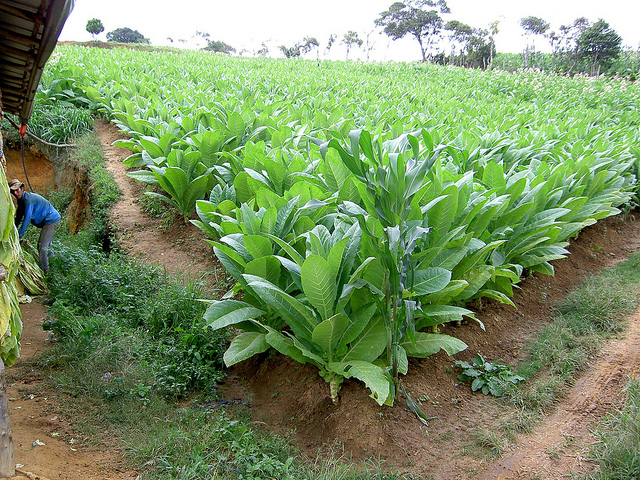Researchers at Michigan Technological University suggest that tobacco growers could increase their income by converting their plantations to solar farms.
According to the study “Economic Impact of Substituting Solar Photovoltaic Electric Production for Tobacco Farming,” tobacco cultivation lands provide an interesting opportunity for solar energy development in the U.S., as tobacco consumption in the country is decreasing, while demand for land for solar farms is increasing.
North Carolina was chosen for this case study because it hosts several tobacco producers and has large swathes of land and high solar potential.
“Previously, more modest attempts to offset fossil fuels with biofuels required so much land that food crops were offset, raising food prices and increasing hunger throughout the world. We were looking for large areas of land that could be used for solar power that would not increase world hunger,” said research coordinator, Joshua Pearce.
In addition, the research team has stressed that, unlike tobacco plants, solar modules can withstand extreme heat, cold, ice, snow, hail, torrential rain, droughts and other unstable weather conditions.
The researchers conducted an analysis on the economic factors of installed solar farms and their effects on profits, while comparing profits from such a business with gains from growing tobacco.
Popular content
The scheme they used was quite conservative: They applied positive assumptions about the yield and price of tobacco crops, noting that there could also be a decrease in the demand for tobacco since fewer people are starting to smoke and current smokers die. They then analyzed how much the price of electricity could increase each year based on real data.
When making the analysis, the tobacco producers should also calculate LCOE (levelized cost of electricity) for their solar farm and compare it with the price of electricity in their particular location, fee structure and load, as well as other economic factors.
The researchers concluded that, if each tobacco farm in North Carolina was converted to solar energy production, there is the potential to generate 30 GW, which is equivalent to the state's maximum summer peak load.
“In the long run, tobacco farmers stand to make more money farming solar rays for energy, instead of growing a component of cigarettes,” the research group asserted.
But not only farmers would benefit: if U.S. tobacco plantations would become solar farms, around 480,000 deaths per year of current smokers, and more than 42,000 deaths per year caused by passive smoking, could be avoided.
This content is protected by copyright and may not be reused. If you want to cooperate with us and would like to reuse some of our content, please contact: editors@pv-magazine.com.



1 comment
By submitting this form you agree to pv magazine using your data for the purposes of publishing your comment.
Your personal data will only be disclosed or otherwise transmitted to third parties for the purposes of spam filtering or if this is necessary for technical maintenance of the website. Any other transfer to third parties will not take place unless this is justified on the basis of applicable data protection regulations or if pv magazine is legally obliged to do so.
You may revoke this consent at any time with effect for the future, in which case your personal data will be deleted immediately. Otherwise, your data will be deleted if pv magazine has processed your request or the purpose of data storage is fulfilled.
Further information on data privacy can be found in our Data Protection Policy.